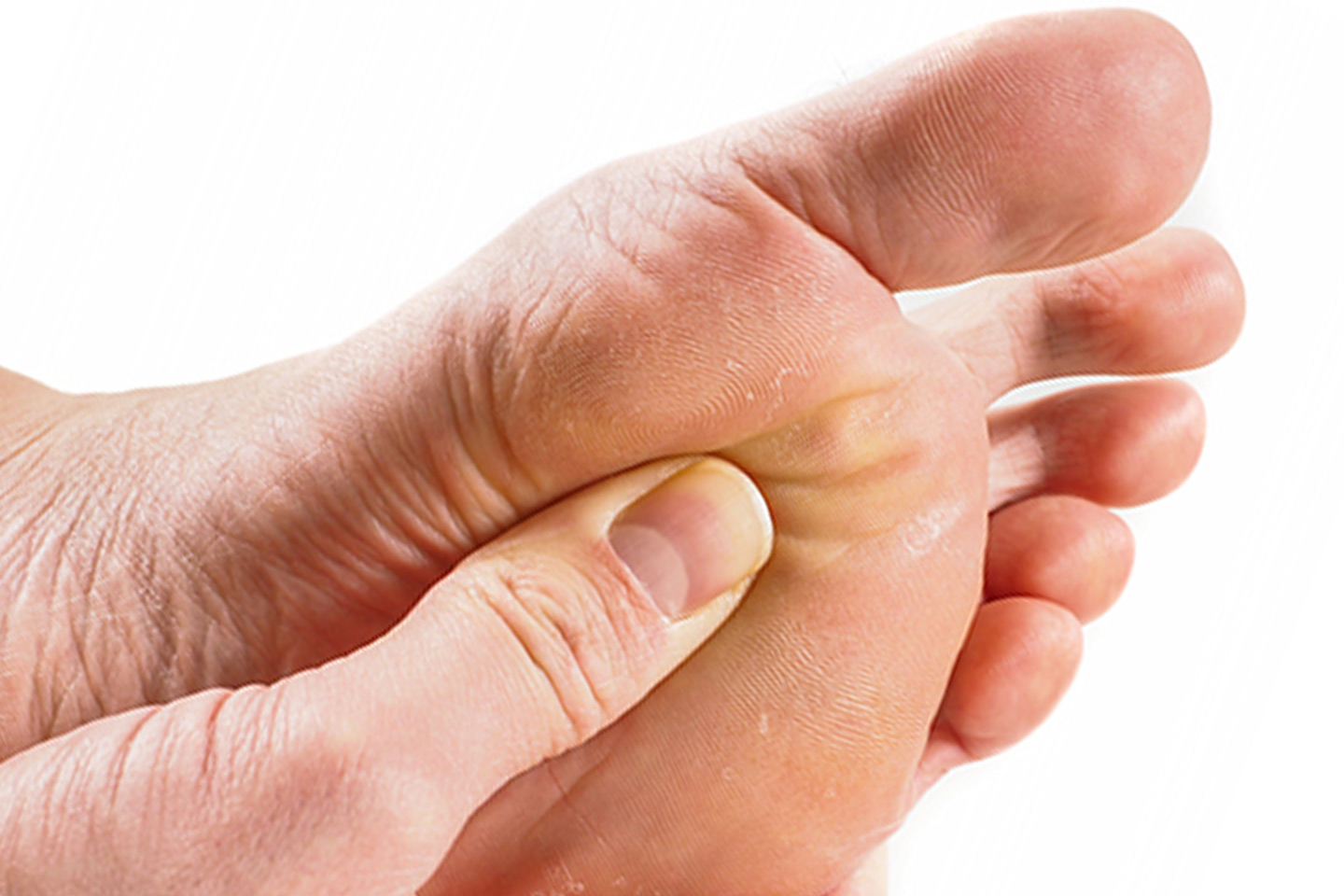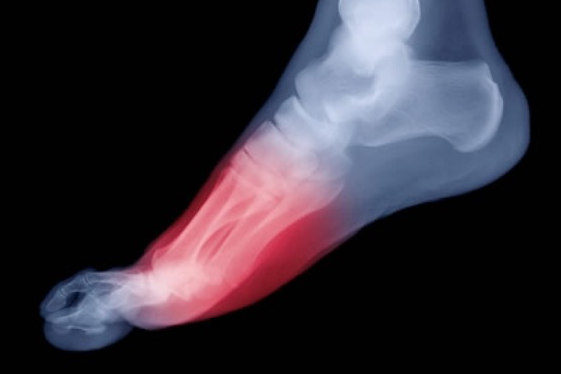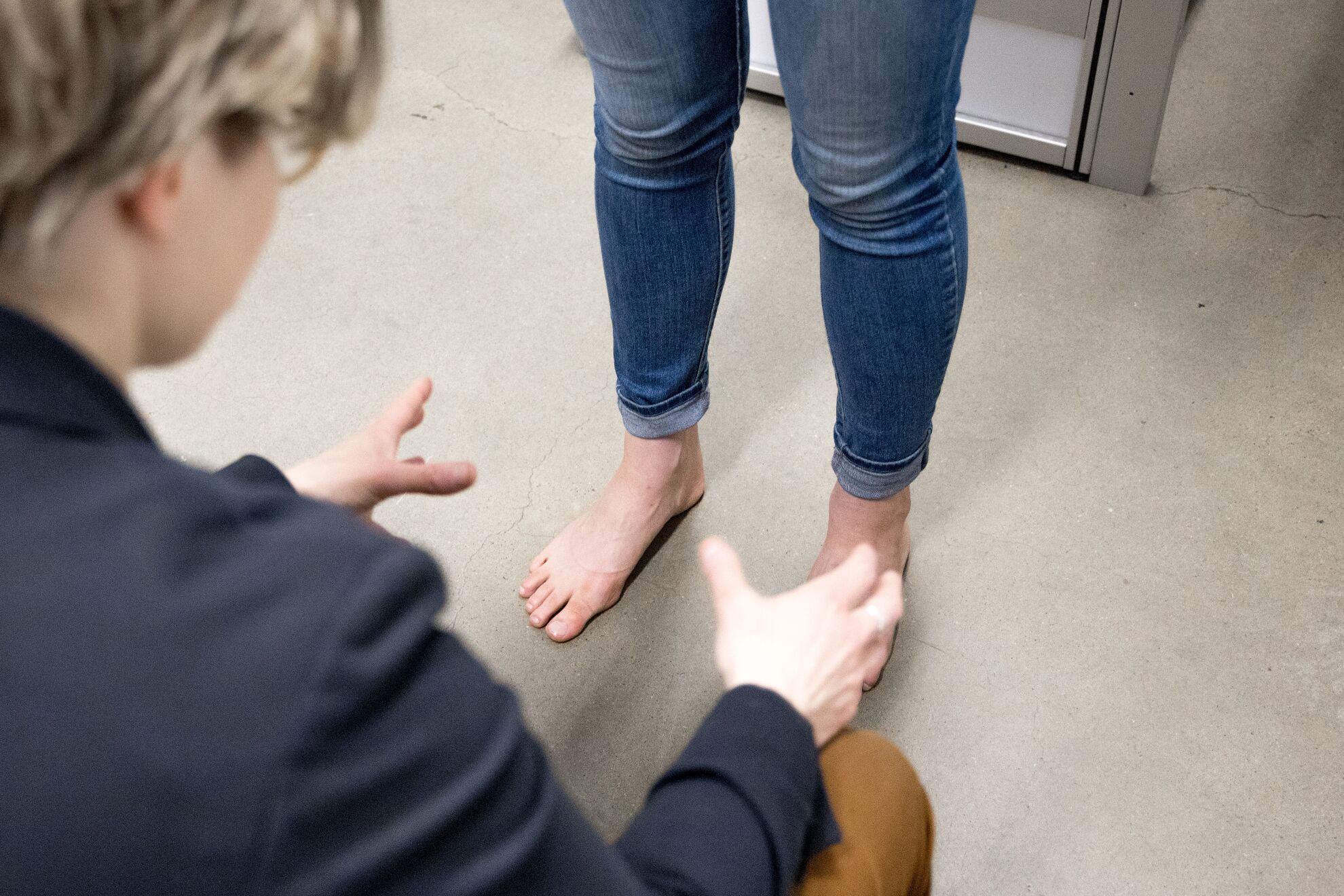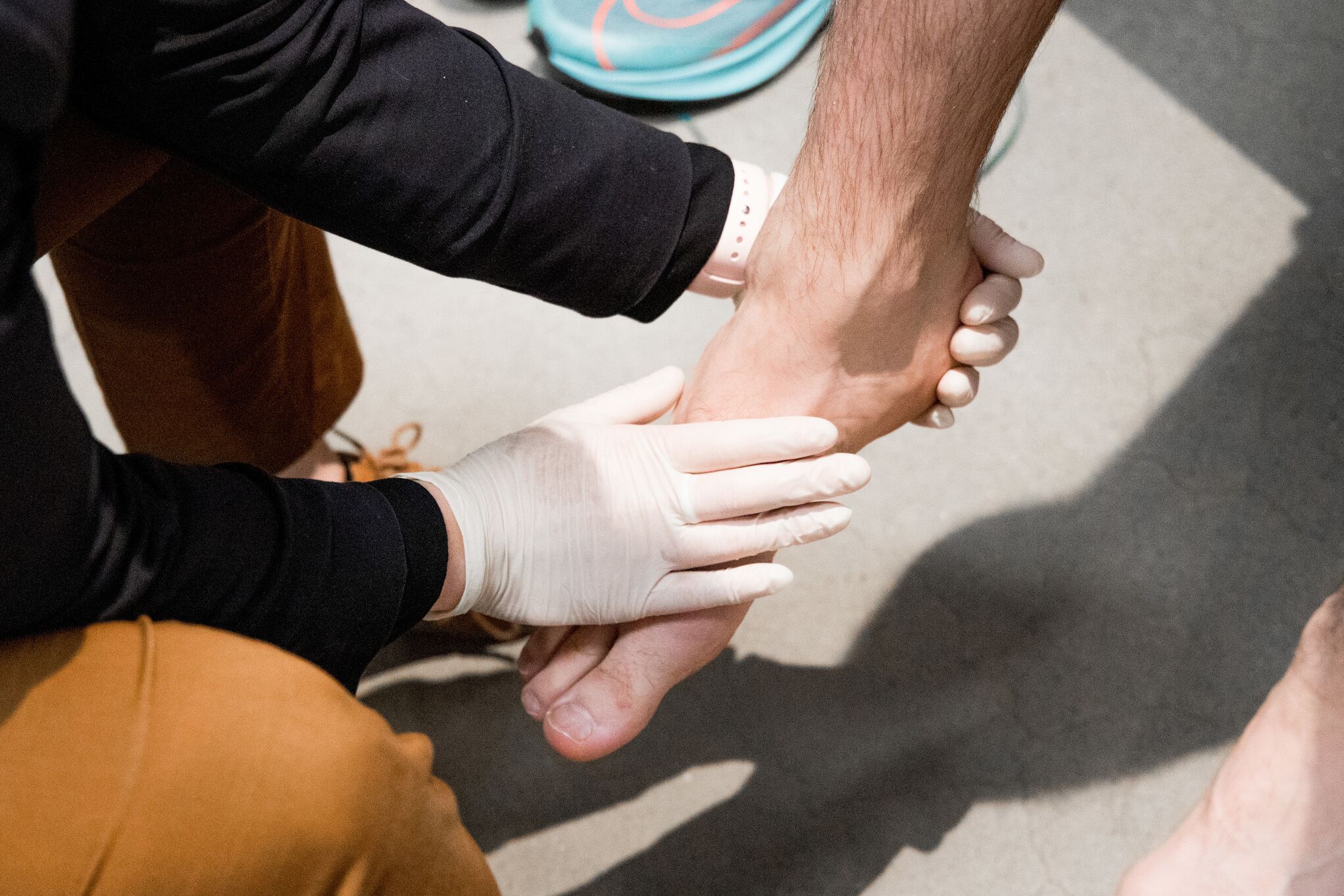Definition of Morton’s Neuroma
Morton’s Neuroma involves a thickening of the tissue around one of the nerves that is connected to the toes. This can cause sharp, burning pain in the ball of the foot, particularly between the third and the fourth toes.
Sometimes the cause cannot be identified, in other cases the condition develops as a result of trauma, misalignment of the foot or poor foot posture.

Symptoms of Morton’s Neuroma
The most common symptom is a sensation of having a lump underneath the foot. Some patients describe it like a pebble.
Another common symptom is a burning sensation radiating through and between the toes of the patient, which is worsened with weight-bearing and certain footwear.

Who The Condition Affects
Morton’s Neuroma affects a variety of people, often active people or people who wear inappropriate footwear for a lengthy period of time, often resulting in the condition flaring up.
For example, high heels with pointy toes would certainly exacerbate a Morton’s Neuroma to someone predisposed to the condition.
Males and females of all age groups may be affected but generally the most common affected will be middle-aged to older people.

Diagnoses of Morton’s Neuroma
Morton’s Neuroma can be hard to diagnose without an ultrasound, but the description of pain helps to distinguish it. In the event that a patient identifies a sensation of discomfort underneath their foot, like a bony lump that is painful to push on – that indicates Morton’s Neuroma as a possibility.
When we perform a ‘squeeze test’ on such patients, (squeezing the front of the foot), it can replicate the shooting pains to the toes.
The patients may also describe some numbness in their third and fourth toes, which again, suggests Morton’s Neuroma.

Treatment of Morton’s Neuroma
The most common treatment is looking at a foot orthotic with a significant metatarsal dome. We would also need to consider footwear type and activity levels in the management.
The goal of the metatarsal dome is twofold:
- To open up the metatarsals to ensure that they don’t squash the nerves of the foot, so patients experience less of the compression on the neuroma and;
- To offload the pressure on the plantar surface of the Neuroma
Many patients respond really well and their symptoms will resolve assuming they wear the right shoes for the most part. Naturally, if a patient continues to choose poor shoes, they may continue to experience pain from the condition.
Despite this, there is a subset of patients who still have ongoing symptoms and will need to consider surgical management for removal of the neuroma.

Timeframes for Treatment of Morton’s Neuroma
We would like to see an improvement within four weeks. If we start to see a positive change in the four week period then we anticipate that foot Orthotics are the appropriate treatment and that, with time, it will further improve.
If we’re observing no change or a worsening of symptoms in that time period, then we will need to adjust the treatment. This may mean altering the foot Orthotics by increasing the height of the dome
Treatment would be regularly reviewed and, if improvement was not observed, a discussion likely conducted at the 12 week mark, on whether escalated options should be considered.

Morton’s Neuroma Referrals for Orthotics Plus
Orthotics Plus is experienced with management of this condition and would encourage you to contact us at the first sign of foot pain.
- Many referrals for Morton’s neuroma are received from a surgeon where foot Orthotics should be trialed prior to the determination of surgery being required
- Our treatments are considered conversative, low cost and low-risk
- You will be treated by a qualified, Australian staff member
- We hand-craft superb quality custom Foot Orthotics – shaped perfectly for you
Please use our clinic locations page with any enquiries.

FAQ
Morton’s Neuroma is not preventable, but I think the symptoms can be managed to prevent an exacerbation of the condition.
Some sufferers are asymptomatic but through proper footwear selection over time, are unlikely to ever experience a flare up.
Most cases of the condition appear to be related to improper footwear selection and overuse of said footwear.
Call a professional as soon as you find that you’re developing consistent symptoms.
Whether that involves a feeling of a ‘pebble’ underneath the foot or whether it’s shooting pains to your toes, when that is first noticed, it’s important to get in touch with a health professional.